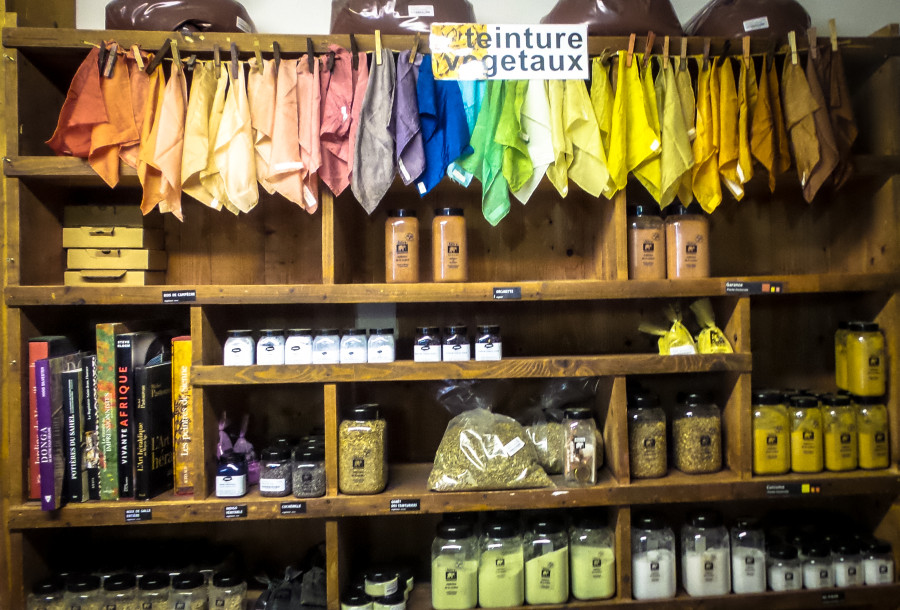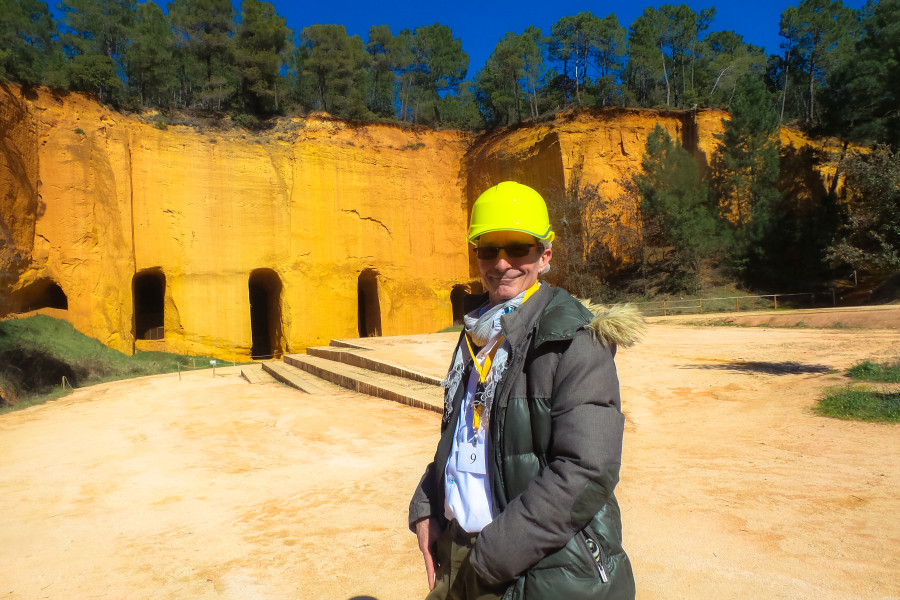
Enjoying a Day out to Explore the Ochre Trails of Provence
During the Paleolithic period, the Mediterranean sea covered what we know today as the entire Lubéron area of Provence with its spectacular perched villages. When the sea eventually receded over time, something special and unique happened here. Pouring rain slowly transformed the accumulated layers of limestone into ochre-bearing sands. Pre-historic man used this natural paint to create pre-historic cave drawings. And when the ochre was re-discovered during the French Revolution, it became a commodity sold throughout the world for over a century. It was industrialized for use as a dye for paint, and its clay used as a “skeleton” for the rubber industry. Decline in the mid 20th century for the once needed clay for the rubber industry left the ochre quarries abandoned. However, after nearly 50 years of sitting untouched, this area once bustling with industry and workers removing the colorful clays is now on a path to revival. Curious tourists come to walk the picturesque colored trails left behind, and photograph this natural wonder found nowhere else in France.
And so do we!! Off the Beaten Path guide, Philippe, who co-leads our Off the Beaten Path Ochre Tour in Provence alongside Christy Destremau, set out on a Saturday morning to visit the “Mines de Bruoux” in the Luberon for a guided visit of about 40 km of colorful cave trails. Sporting a yellow construction site helmet, and a “tag number” to ensure the guide loses no one in the caves, Philippe and the rest of his fellow visitors followed the guide into the mountain. The cave galleries are 15m high and carved naturally. Once inside, you feel like you have entered into a colorful cathedral. The guide spends his time, as you walk through the galleries, explaining how man carved the hollows from ground level to the top using only small tools.
 Upon conclusion of the cave gallery visit, Philippe continued on to the “Conservatoire des Ocres / Usine Mathieu” for an insider visit of the factory where the ochre was processed once removed from the quarries. At the beginning of the 20th century, the village of Roussillon had over 20 factories employing more than a 1,000 workers to extract the pigment from the Ochre cliffs. Today however, the “Usine Mathieu” remains the only place kept alive to tell the story of ochre. Philippe headed out on a nice little path with signs explaining the journey of the extracted rock. As he made his way around the trail he learned about the different stages of ochre production from its initial coloring to final product ready for shipment to market.
Upon conclusion of the cave gallery visit, Philippe continued on to the “Conservatoire des Ocres / Usine Mathieu” for an insider visit of the factory where the ochre was processed once removed from the quarries. At the beginning of the 20th century, the village of Roussillon had over 20 factories employing more than a 1,000 workers to extract the pigment from the Ochre cliffs. Today however, the “Usine Mathieu” remains the only place kept alive to tell the story of ochre. Philippe headed out on a nice little path with signs explaining the journey of the extracted rock. As he made his way around the trail he learned about the different stages of ochre production from its initial coloring to final product ready for shipment to market.
— Our shorthand version of the process —
1 – Coloring : The rock is yellow to red in color. Naturally yellow, the ochre turns red by oxidation. If the color of the extracted yellow rock needs to be changed, for example turned into red, there are 2 solutions. First, wait a few hundred years, or second, warm it up to speed up the oxidation process. The first stop along the walking trail is the “ochre bakery” where men would heat the quarried rocks to change the ochre from one color to another or mix ochres to create additional colors.
2 – Crushing : Once the desired color is attained, the stone is crushed, like crushing olives during the production of Olive oil.
3 – Filtration : The crushed powder is mixed with water and passes into a filtration maze where the sand is progressively separated from the pigment.
4 – Drying : The final stage, the ochre pigment is left to dry in a pond, and then broken into 25kg stones that are left to dry under the Provence summer sun.
5 – Final Crushing & Packaging : Once dried, the pigment is crushed one final time, and passes through the last filtration system using a silk fabric filter. It is then packaged for shipment. And off to market it goes!
If you are excited about unique experiences such as this one, and walking amidst some of Provence’s most beautiful landscapes, come join us on our Best Adventures in Provence® Walking and Foodie Tour!
Some wonderful and colorful photos taken during the Ochre visit. Photo credit goes to our “guide extraordinaire” Philippe Goninet —
Portfolio with an id of "otbp_ochre_in_provence" is not defined.
Our Travel Consultants are available to respond to questions and inquiries
- EMAIL US at franceotbp@gmail.com or CALL 1.717.683.2827 with your tour questions and to inquire about space availability for one of our tours to Provence, Loire Valley, or Bordeaux, France!

